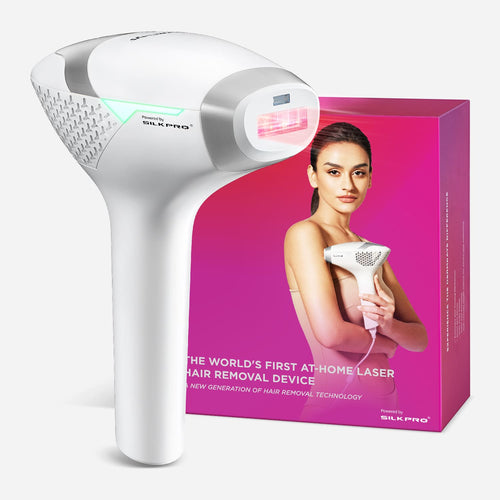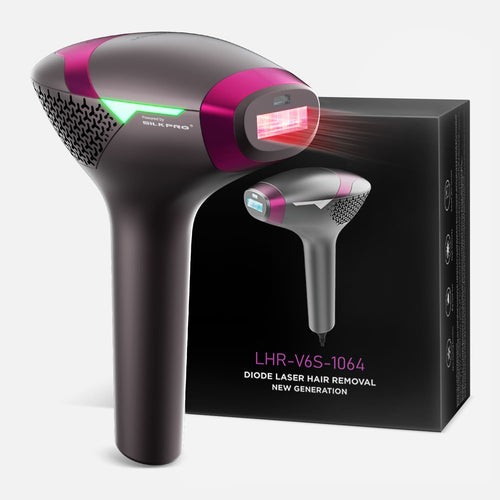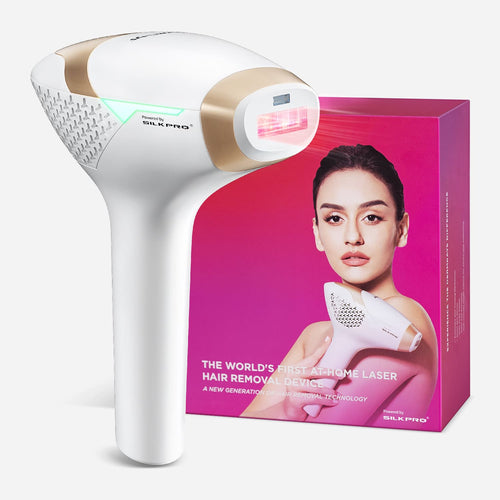Methods of Hair Removal
1. Shaving:
Shaving is perhaps the most traditional and widely practiced method of hair removal. It involves using razors to cut the hair at the skin's surface. While it provides a quick solution, the regrowth is relatively fast, and the results are temporary.
2. Waxing:
Waxing is a popular method that involves applying warm wax to the skin and then pulling it off, along with the hair. This method provides longer-lasting results compared to shaving, as it removes hair from the root. However, it can be painful and may cause skin irritation.
3. Depilatory Creams:
Depilatory creams contain chemicals that break down the structure of the hair, making it easy to wipe away. While convenient, these creams may have a strong odor and can cause skin sensitivity or allergies in some individuals.
4. Epilation:
Epilation involves removing hair from the root using devices such as tweezers or electric epilators. It provides longer-lasting results than shaving but may be time-consuming and uncomfortable.
5. Laser Hair Removal:
Laser hair removal is a technologically advanced method that uses concentrated light to target hair follicles, inhibiting future hair growth. It is gaining popularity for its long-term effectiveness and precision.
Types of Laser Hair Removal
1. Diode Laser:
Diode lasers are commonly used in laser hair removal procedures. They emit a specific wavelength of light that targets the melanin in the hair follicles, making it effective for individuals with darker hair and lighter skin.
2. Alexandrite Laser:
This laser is known for its quick treatment sessions and is suitable for a broader range of skin tones. It works by producing a longer wavelength of light, allowing it to penetrate deeper into the skin.
3. Nd: YAG Laser:
Nd: YAG lasers are versatile and can be used on various skin types, including darker skin tones. They have a longer wavelength, making them less absorbed by melanin and reducing the risk of pigmentation issues.
4. IPL (Intense Pulsed Light):
While technically not a laser, IPL is often considered in discussions about hair removal. It uses broad-spectrum light to target hair follicles and can be less effective than laser treatments but may be suitable for certain individuals.
Which Laser Hair Removal Is Best?
Determining the best laser hair removal method depends on various factors, including skin type, hair color, and personal preferences. Diode lasers are often recommended for those with dark hair and lighter skin, while Alexandrite lasers and Nd:YAG lasers offer options for a broader range of skin tones.
It's crucial to consult with a qualified professional to assess individual needs and recommend the most suitable laser technology. Factors such as the location of hair removal, pain tolerance, and desired results also play a role in selecting the best laser hair removal approach.
Laser Hair Removal Classes
As the demand for laser hair removal continues to rise, education and training in this field become increasingly important. Laser hair removal classes are designed to equip practitioners with the knowledge and skills required to perform safe and effective procedures.
1. Theory and Science:
Laser hair removal classes typically cover the scientific principles behind the technology. Understanding how lasers interact with hair follicles and skin is essential for practitioners to make informed decisions during treatments.
2. Safety Protocols:
Safety is paramount in laser hair removal. Classes focus on safety protocols to minimize the risk of adverse effects, including burns or pigmentation issues. This includes proper skin typing, assessing contraindications, and using appropriate protective measures.
3. Practical Training:
Hands-on experience is a crucial component of laser hair removal classes. Practitioners learn to operate different laser devices, perform test spots, and adjust settings based on individual characteristics. This practical training enhances their proficiency and confidence in administering treatments.
4. Client Consultation and Communication:
Laser hair removal classes also emphasize effective communication with clients. Understanding client expectations, conducting thorough consultations, and managing post-treatment care contribute to a positive and professional client-practitioner relationship.
5. Regulatory Compliance:
Practitioners must be aware of and adhere to regulatory standards and guidelines. Laser hair removal classes provide insight into legal and ethical considerations, ensuring practitioners operate within the bounds of the law and maintain a high standard of professionalism.
Advancements in Laser Hair Removal Technology
1. Precision and Targeting:
One of the significant advancements in laser hair removal technology is the improvement in precision and targeting. Modern laser devices are equipped with advanced targeting systems, allowing practitioners to focus the laser energy precisely on the hair follicles. This enhances the effectiveness of the treatment while minimizing damage to surrounding tissues.
2. Comfort and Speed:
Technological advancements have led to the development of laser devices with features that prioritize patient comfort and reduce treatment time. Cooling systems, such as integrated cooling tips or air cooling, help alleviate discomfort during the procedure. Additionally, faster pulse durations and larger spot sizes enable quicker treatment sessions.
3. Adaptive Optics:
Some laser systems incorporate adaptive optics technology, which adjusts the laser beam's characteristics based on real-time feedback from the skin. This adaptive approach enhances treatment efficacy by optimizing the energy delivery according to individual skin and hair characteristics.
4. Smart Systems and Connectivity:
The integration of smart systems and connectivity features is another notable trend. Some laser devices come with intuitive touchscreen interfaces, customizable treatment presets, and connectivity options that allow practitioners to monitor and control treatments remotely. This not only enhances efficiency but also contributes to a more user-friendly experience.
Considerations for Choosing Laser Hair Removal
1. Skin Type and Hair Color:
The contrast between the color of the hair and the surrounding skin influences the effectiveness of laser hair removal. Individuals with dark hair and light skin typically respond well to laser treatments, but advancements in technology have expanded the options for individuals with varying skin tones and hair colors.
2. Treatment Area:
Different laser devices are designed for specific treatment areas. Some are suitable for larger body areas, such as the legs or back, while others are more appropriate for smaller, more delicate areas like the face or bikini line. The versatility of laser devices allows practitioners to tailor treatments to the specific needs of each client.
3. Pain Tolerance:
Pain tolerance varies among individuals, and laser hair removal can cause discomfort. Advancements in technology have led to innovations like integrated cooling systems and contact cooling, which help minimize pain during the procedure. Discussing pain management options with the practitioner is essential for a positive experience.
4. Number of Sessions and Maintenance:
Laser hair removal is typically not a one-time procedure. Multiple sessions are required to achieve optimal results, and maintenance sessions may be necessary to address any regrowth. Understanding the expected number of sessions and the need for maintenance is crucial for individuals considering laser hair removal.
Emerging Trends in Hair Removal
1. At-Home Laser Devices:
A notable trend in recent years is the availability of at-home laser hair removal devices. These devices, while less powerful than professional equipment, offer a convenient option for individuals who prefer the privacy and flexibility of performing hair removal treatments at home.
2. Combination Therapies:
Some practitioners explore combination therapies, combining laser hair removal with other cosmetic procedures for enhanced results. For example, combining laser hair removal with skin rejuvenation treatments may address both hair removal and skin concerns simultaneously.
3. Sustainable Practices:
With an increased focus on sustainability, there is a growing interest in eco-friendly hair removal practices. Some salons and clinics are adopting sustainable approaches, such as using energy-efficient laser devices and implementing recycling initiatives for disposable components.















Leave a comment
All comments are moderated before being published.
This site is protected by hCaptcha and the hCaptcha Privacy Policy and Terms of Service apply.